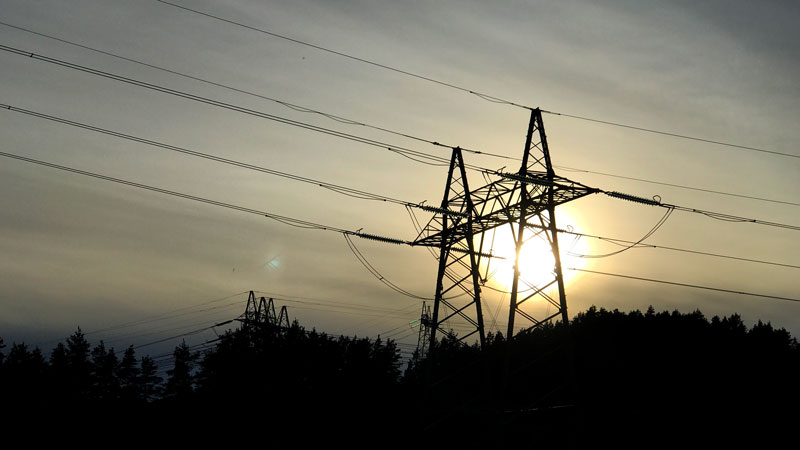3.4 Environmental constraints and uncertainties – impact on revenues
Environmental constraints and uncertainties – impact on revenues
Environmental constraints and uncertainties – impact on revenues
Environmental constraints and uncertainties – impact on revenues
In a future energy market with rapid and unpredicable fluctuations in power generation from wind-, solar- and unregulated hydropower, hydropower producers need to adjust operational schedules to new price patterns and relate to new operational constraints. HydroCen will test new methods and tools for advances operational scheduling that also includes environmental constraints.

In the future, the Nordic power system will have tighter connections with Europe and an increasing proportion of intermittent renewable generation from, for example, wind, solar, and unregulated hydroelectric systems. Rapid and unpredictable fluctuations in intermittent generation will offer new possibilities for controllable generation to be able to respond to these fluctuations.
To capture the impact on rapid fluctuations in generation and power prices when computing the expected marginal value of water (water values), long- and medium-term hydropower scheduling tools are run using finer time resolution and with a more detailed representation of the physical system.
In symphony with the ongoing power market changes, the physical and environmental requirements associated with hydropower operation are changing, e.g. through proposed revisions of hydropower concessions conditions and the implementation of EU Water Framework Directive.
Consequently, hydropower producers need to both adjust their operational schedules according to the new price patterns seen in the market and at the same time relate to new operational constraints. In this context, the producers need operational planning (or scheduling) tools (or models) that relate to physical and environmental constraints in a precise and consistent manner.
Operational scheduling models have been widely used by Nordic hydropower producers for several decades.
Although these have been developed along different methodological tracks, the stochastic dual dynamic programming (SDDP) method is currently the state-of-the-art method for medium-term hydropower scheduling.
The SDDP method allows for optimization of hydropower schedules provided a detailed and complex system description and uncertainties in e.g. inflow and power price.
SINTEF Energy Research maintains and develop the software tool ProdRisk which is based on the SDDP method, and conducts multiple research projects involving ProdRisk prototypes. Methodological research within WP3.4 will primarily be related to the SDDP method, and ProdRisk prototypes will be developed to test methodological advances in realistic case studies.
Many of the environmental constraints involve state dependencies which are not easily treated in the SDDP method. The main complicating factor is the nonconvexities associated with such constraints, since the SDDP method requires a convex model formulation.
Besides approximating nonconvexities within the SDDP method, this project also aims at exploring recent methodological advances, such as the stochastic dual dynamic integer programming (SDDiP) approach for more accurate modelling of environmental constraints.
HydroCen Report nr. 12
HydroCen Report nr. 12
Environmental Constraints in Seasonal Hydropower Scheduling Survey and Feasibility. Arild Helseth, SINTEF Energi AS. The work documented in this report has been carried out in project WP3.4 in the HydroCen research center. We have surveyed the need for improved modelling of environmental and tech-nical constraints related to operational hydropower scheduling software. The results have been processed and summarized, and we have selected the two major types of constraints that seems the most relevant for this project. The two constraint types are described and their possible in-clusions in the stochastic dual dynamic programming (SDDP) algorithm are assessed.
Publications work package 3.4 Environmental constraints and uncertainties – impact on revenues
Publications work package 3.4 Environmental constraints and uncertainties – impact on revenues
Nonconvex Environmental Constraints in Hydropower Scheduling. Arild Helseth, Birger Mo, Hans Olaf Hågenvik. 2020 International Conference on Probabilistic Methods Applied to Power Systems (PMAPS)
Constraints in Seasonal Hydropower Scheduling Survey and Feasibility. Arild Helseth, SINTEF Energi AS. HydroCen Report 12. 2019
Impact of Modelling Details on the Generation Function for a Norwegian Hydropower Producer. M N Hjelmeland, A Helseth and M Korpås. Journal of Physics: Conference Series, Volume 1042, conference 1. 2018
Publications 2017
Publications 2017
Askeland, Magnus; Jaehnert, Stefan; Mo, Birger; Korpås, Magnus. Demand response with shiftable volume in an equilibrium model of the power system. I: 12th IEEE Power and Energy Society PowerTech Conference PowerTech Manchester 2017. IEEE Press 2017 ISBN 978-1-5090-4238-8. ENERGISINT NTNU
Contact
Contact
Arild Helseth
About the project
About the project
About WP 3.4
Full project name: Environmental constraints and uncertainties – impact on revenues
Duration: 2017-2024
Objective: To develop methods and prototype models for computing operational strategies and profits for operators of hydropower systems that include complex environmental constraints.
Researchers working on the project: Arild Helseth, Per Eilif Wahl, Birger Mo, Hans Olaf Hågenvik.
R&D Partners: SINTEF Energy, NTNU, NINA
Associated projects: IBM – Integrated Balancing Markets in Hydropower Scheduling Methods (KPN project, 2014-2018). MultiSHARM – Day-Ahead Bidding with Multiple Short-Term Markets (KPN project, 2015-2018).
Master students associated with the project: Håkon I Arvidsen.

